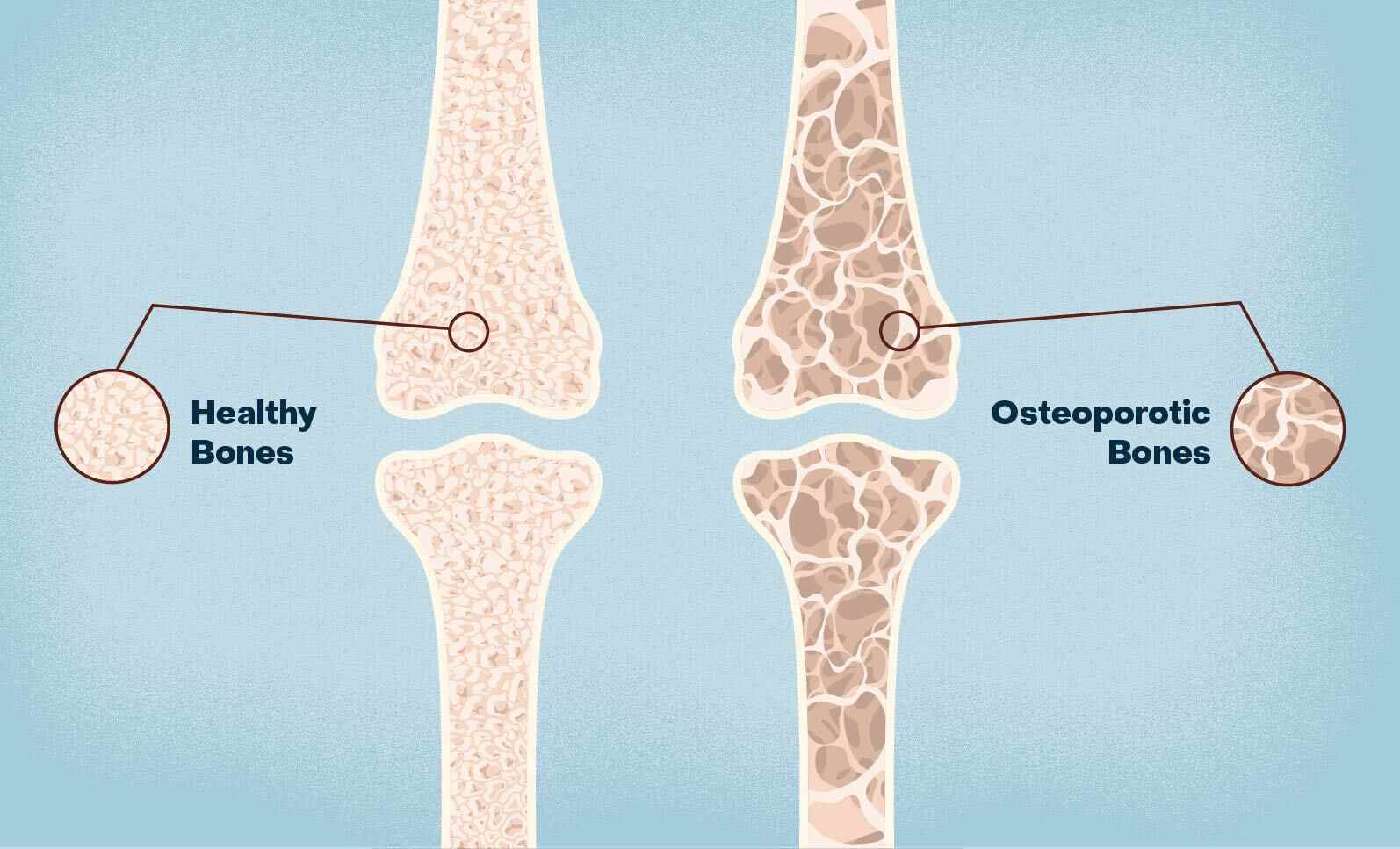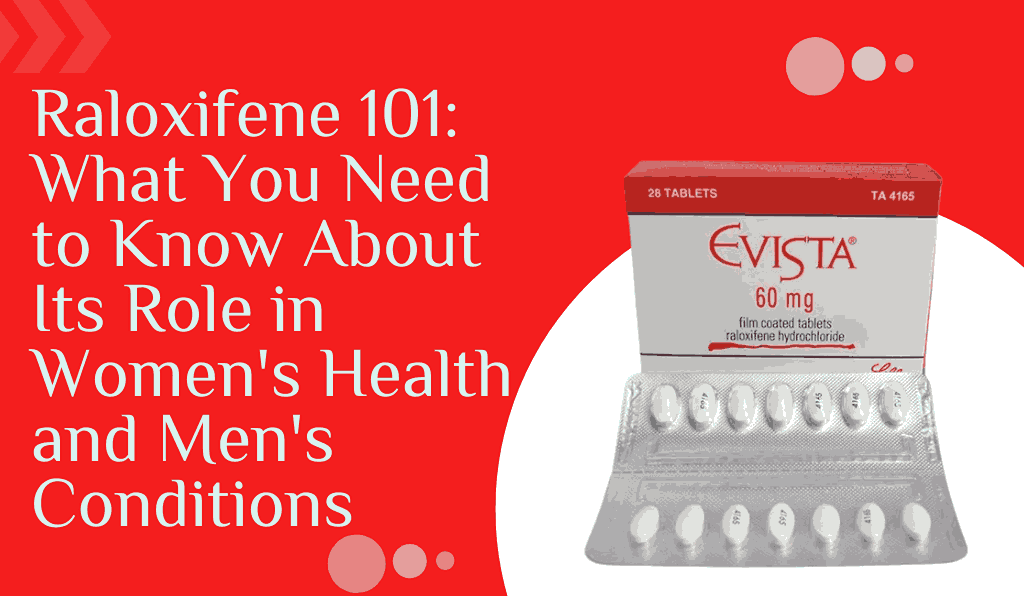Table of Contents
Raloxifene 101: Key Information About Its Use in Women’s Health and Men’s Issues Welcome to Raloxifene, a medication important for women’s health and has unexpected benefits for men’s, too! If you’re curious about how this selective estrogen receptor modulator (SERM) affects bone density, breast cancer risk, and prostate health, you’ve come to the right place. In this guide, we will explain Raloxifene, including its start as a treatment for osteoporosis in women after menopause and its growing use for different health issues in both men and women. If you’re thinking about this for yourself or someone you care about, come along as we learn about this potent medicine many benefits and essential points. Understanding your health is always good, and more about where to buy Raloxifene in the UK.
Introduction to Raloxifene (Evista ) and its uses
Raloxifene is a Medicine known as a selective estrogen receptor modulator (SERM). You say Raloxifene like this: ral-ox-e-feen.
You could use it as a treatment for:
- Reduce the chance of getting breast cancer if you have a high or moderate risk
- Stop and treat bone loss (osteoporosis)
- Raloxifene is meant only for women who have stopped having their periods (postmenopausal).
Doctors give Raloxifene off-label. It means it is not approved as a treatment to reduce the chance of breast cancer. The National Institute for Health and Care Excellence (NICE) recommends this.
How does Raloxifene work?
Raloxifene works similarly to the female hormone estrogen, even though it is not a hormone. It mimics how estrogen works and can help make bones thicker to prevent and treat bone loss.
Raloxifene helps avoid breast cancer by blocking the hormone estrogen. Some breast cancer cells require hormones like estrogen and progesterone to grow. Raloxifene prevents estrogen from helping breast cancer cells grow.
Raloxifene helps keep bones strong by working like estrogen in bone cells. It helps osteoblasts, the cells needed to create new bone. It is beneficial for women after menopause, as they have a higher chance of osteoporosis.
Raloxifene targets specific receptors, which benefits treatment while avoiding some side effects that come with regular hormone therapy. Its unique workings make it a good choice for treating health issues linked to hormonal changes.
Benefits of Raloxifene for Women
1.Prevention and Treatment of Osteoporosis
Osteoporosis is a significant health issue for women who have gone through menopause. After menopause, oestrogen levels drop, which makes bones less dense and raises the risk of breaking them. Raloxifene helps keep bones strong by protecting bone tissue in the same way that oestrogen does. Raloxifene has been shown in clinical tests to lower the chance of spinal fractures. This makes it an essential choice for treating and preventing osteoporosis.
2.Reducing the Risk of Breast Cancer
One of the most common types of cancer in women is breast cancer. By stopping estrogen from working in breast tissue, raloxifene lowers the chance of getting hormone-receptor-positive breast cancer. This result helps women who have a family history of breast cancer or who are at a high risk of getting it.
3. Potential Cardiovascular Benefits
Raloxifene is not explicitly approved to avoid heart disease, but studies show that it may have a good effect on cholesterol levels. It keeps HDL (good cholesterol) high while lowering LDL (bad cholesterol). Having healthy cholesterol levels is very important for the health of your heart.

Benefits of Raloxifene for Men
1. Treatment for Gynecomastia
Gynaecomastia, or men’s breast tissue getting more prominent, can be caused by problems with hormones, side effects from medications, or using anabolic steroids. Raloxifene is a good medicine for mens with this problem because it blocks oestrogen receptors and helps get rid of extra breast tissue.
2. Supporting Bone Health
Osteoporosis is usually thought of as a disease in women, but men can also lose a lot of bone mass as they age. Raloxifene might help men’s bone structure, especially those more likely to break bones because of low testosterone or other health problems.
3. Potential Role in Hormonal Regulation
Raloxifene has been looked at as a possible treatment for men who have low testosterone or an excess of oestrogen. Even though it’s not the primary way to treat hypogonadism, its ability to change how oestrogen works could make it useful in some cases.
How to Take Raloxifene
Most people take raloxifene as a tablet once a day. It is essential to follow the dose and guidelines your doctor gives you. Because Raloxifene changes how bones are broken down, people may also be told to get enough calcium and vitamin D to keep their bones healthy.
How often do you have Raloxifene?
You take Raloxifene once a day. Pick a time that works best for you, but try to take it around the same time each day. If you are taking it to lower the chance of breast cancer, you should take it for 5 years.
Check with your doctor about how long you should take Raloxifene. They suggest that you take calcium and vitamin D tablets.
Treatment options for men with gynecomastia and how Raloxifene can help
Gynaecomastia is when men have enlarged breast tissue. It can be upsetting and lower self-confidence. There are different treatment choices available, including lifestyle changes and surgery.
For some mens, medicine is vital for reducing symptoms. Raloxifene stands out as a selective estrogen receptor modulator (SERM). It helps regulate hormones by stopping estrogen from affecting breast tissue.
Studies show that Raloxifene can shrink glandular breast tissue, helping to treat gynecomastia without surgery. It makes it a good choice for people looking for alternatives to surgery.
Raloxifene might cause fewer side effects compared to other methods like hormone therapy or surgery. If you’re thinking about this option, talk to your doctor about the possible benefits and risks that apply to you.
Raloxifene Side Effects
While many people experience raloxifene well, some may experience side effects in gynecomastia such as:
- Hot Flashes
- Leg Cramps
- Increased Blood Clot Risk
- Fatigue & Weakness
- Joint or Bone Pain
While raloxifene is generally well-tolerated, some users may experience serious side effects that require immediate medical attention. Here are the most critical risks to be aware of:
- Blood Clots
- Stroke
- Severe Allergic Reactions
- Liver Damage
- Severe Leg Cramps & Swelling
Warnings & Precautions
Warnings:
- Blood Clots: Raloxifene may increase the risk of blood clots, including deep vein thrombosis (DVT) and pulmonary embolism (PE). Avoid if you have a history of blood clots.
- Stroke Risk: Raloxifene may increase the risk of stroke, especially in women with heart disease or high stroke risk.
- Not for Premenopausal Women: Raloxifene is not recommended for women still having their menstrual periods.
- Liver Problems: Use with caution if you have liver issues, as safety and effectiveness are not fully established in these cases.
Precautions:
- Uterine Bleeding: Any unexplained uterine bleeding should be investigated by your doctor.
- Breast Changes: Report any unexplained changes in your breasts to your healthcare provider.
- Kidney Issues: Caution is needed if you have moderate or severe kidney problems.
- Medicine Interactions: Raloxifene can interact with other medications. Inform your doctor about all the medicines you’re taking.
Additionally, if you’re pregnant or plan to become pregnant, Raloxifene is not recommended due to its effects on fetal development.
Regular monitoring by healthcare professionals is crucial while on this medicine. If you notice unusual symptoms or changes in your health status, seek medical advice promptly for proper assessment and guidance tailored to your needs.
Who Should Avoid Raloxifene?
Not everyone should take raloxifene. People with the following health problems shouldn’t take this medicine unless their doctor tells them to:
- A history of blood clots or deep vein thrombosis (DVT)
- Severe livedisease
- Pregnant or breastfeeding women
- Individuals with unexplained vaginal bleeding
If you have a medical history of stroke or heart disease, consult your doctor to assess the potential risks of taking Raloxifene.
Consultation and Monitoring
Before starting Raloxifene, it is essential to consult a healthcare provider for a thorough evaluation. Regular monitoring may include:
- Bone density scans to assess treatment effectiveness
- Blood tests to monitor cholesterol and other relevant markers
- Regular check-ups to evaluate any potential side effects
Lifestyle Considerations While Taking Raloxifene
Following a good diet and lifestyle can make Raloxifene work better. Here are some essential tips:
- Exercise Regularly: Weight-bearing and resistance exercises can improve bone strength.
- Eat a Balanced Diet: Ensure sufficient calcium and vitamin D intake for optimal bone health.
- Avoid Smoking and Excessive Alcohol: These habits can weaken bones and increase health risks.
- Stay Hydrated: Proper hydration supports overall health and helps manage side effects.
Conclusion
In both men and women, raloxifene is very important for keeping bones strong, lowering the chance of breast cancer, and dealing with hormone-related problems. Because it only works on oestrogen, it is a unique and helpful medicine for many people. However, you should talk to a doctor or nurse before using it to ensure it is right for your needs. People can get the most out of raloxifene and improve their long-term health by taking it as prescribed and living a healthy life.
To make wise decisions about your treatment options, you need to know about Raloxifene. Always be honest with your doctor so you can feel good about these choices. Get help from people who know how to take charge of your health.





